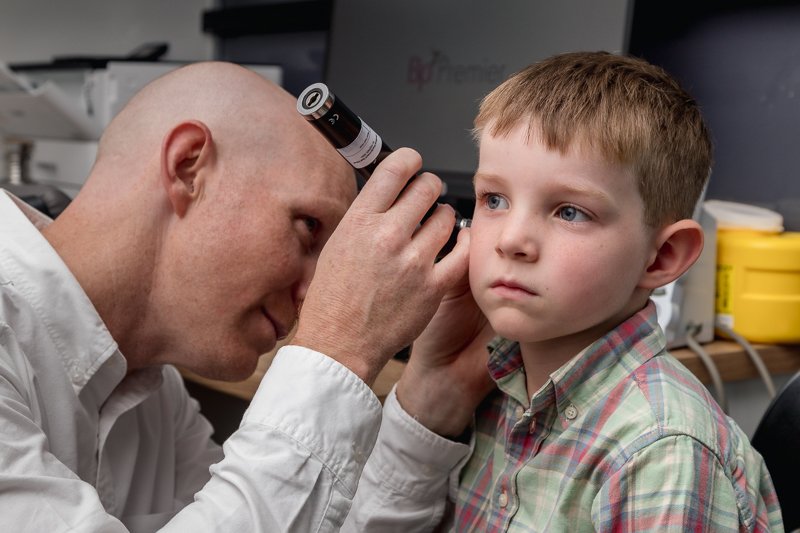About 1,600 Australian women are diagnosed with ovarian cancer every year, with most cases having progressed to a more advanced stage.*
Ovarian cancers don't necessarily just start in the ovary, they can also begin in the far end of the fallopian tubes.
Possible Risk Factors
Genetic
- BRCA1 and BRCA2 - A hereditary genetic mutation in any one of these genes: breast cancer gene 1 (BRCA1) or breast cancer gene 2 (BRCA2) is the most significant risk factor for both breast cancer and ovarian cancer. Women who have breast cancer are also more likely to develop ovarian cancer.
- Lynch Syndrome - Another genetic factor that is linked to ovarian cancer is Lynch Syndrome, an inherited form of colorectal cancer.
- Family History - If any woman in your family - grandmother, mother, aunt, sister - has ovarian cancer, this can increase your risk of ovarian cancer. The risk is not limited to ovarian cancer though. Colon cancer, Uterine cancer, Rectal Cancer, and Breast Cancer in the family are also risk factors.
- Personal History - Having a history of any of these forms of cancer: breast, uterus, colon, and rectum increases a woman's risk of developing ovarian cancer.
Age
Although Ovarian Cancer may occur in women of any age, rates are highest in women aged 55- 64 years.**
LOC and Fertility
A greater number of LOC (lifetime number of ovulatory cycles) increases the risk of Ovarian Cancer for women. The following LOC and fertility factors can contribute to an increased risk of ovarian cancer:
- early menstruation (before 12)
- childlessness
- late pregnancy (had first child after 30)
- late menopause (after 50)
- infertility
Endometriosis
Endometriosis is associated with an increased risk of developing epithelial ovarian cancer due to high estrogen concentration with the disease.
Smoking
Studies reveal that smoking is a potential risk factor for ovarian cancer; researchers have observed increased risk of serous ovarian tumours associated with smoking.***
Obesity
Obese women have a higher risk of developing ovarian cancer. They may not get the more aggressive types of ovarian cancer, but obesity may affect their overall survival from the disease.
Symptoms of Ovarian Cancer
Unlike other forms of cancer, Ovarian Cancer is difficult to detect early - only about 19% of ovarian cancers are diagnosed in the early stages. *****
There are signs that point to a developing ovarian cancer though, symptoms include:
Bloating
Swollen Tummy
Pelvic or Abdominal Pain
Loss of Appetite
Feeling of being full quickly
Frequent, urgent urination
Unexplained Fatigue
Upset stomach or heartburn
Back Pain
Painful Sex
Constipation
Changes in menstruation
Persistent indigestion
Vaginal Bleeding
Unexplained weight loss
Changes in bowel habits
Most of the above symptoms typically occur in advanced stages when the growing tumour has placed pressure on the bladder, rectum, and other organs.
Paying attention to symptoms may improve the chances of early diagnosis and successful treatment. If you have history of ovarian or breast cancer in the family and you've been experiencing any of the above signs for the last three weeks then you should speak to your GP.
You may not have it, but it's best to check. Your GP can do these simple tests to rule out Ovarian Cancer.
Diagnosing Ovarian Cancer
Blood Tests
Women with ovarian cancer can have high levels of a protein called CA-125. A blood test can measure the amount of CA-125 in the blood. About 50% of early cancers will have this protein elevated, and about 80% of late stage cancers. CA-125 is not a conclusive test, and certainly not used as a screening or diagnostic tool. Other conditions such as endometriosis and pelvic inflammatory disease also have high levels of CA-125, and this protein can fluctuate with normal hormonal fluctuations of the menstrual cycle. This test is useful as a tumour marker once the diagnosis of Ovarian cancer has been made because if the treatment is working, the CA-125 will go down normally.
Ultrasound
Transvaginal Ultrasound (TVUS) can detect a tumour in the uterus, fallopian tubes and ovaries by using sound waves to create an image on a video screen. This is done by inserting an ultrasound probe into the vaginal canal. This test can't tell if the condition is cancerous or benign, however it is useful in checking the size and scope of the tumour or masses.
CT Scans
Computed tomography (CT) Scans can't determine a malignant tumour from a benign one, but it helps your GP tell if the tumour has spread to other organs or growing into nearby structures. It can also be used in a CT-guided needle biopsy.
MRI Scans
Magnetic resonance imaging (MRI) scans are particularly helpful to check if the cancer has spread to the brain and spinal cord.
Pelvic Examination
A pelvic examination can help a health care professional detect early ovarian cancer. Changes in the size, shape and consistency of your ovary and uterus will alert your GP of a possible issue.
Treatment Options
The recommended treatment for ovarian cancer depends on a number of factors such as the location of the cancer, the size, its stage, and your age, health, as well as medical history.
Ovarian cancer is most often treated with a combination of surgery and chemotherapy but women who are of childbearing age may not require surgery if the condition is diagnosed very early.
Surgery
Once ovarian cancer is diagnosed or even suspected, surgery is the most important prognostic factor for survival. This usually means removing both the ovaries and fallopian tubes, along with the uterus.
Chemotherapy
It may not be possible to eliminate all the cancer cells even after removing the uterus, ovaries and fallopian tubes. Chemotherapy therefore is an essential secondary treatment. Sometimes, chemotherapy is given before surgery to help shrink the tumour and make it easier for the surgeon to remove.
Radiation Therapy
Radiation therapy uses high-energy X-rays or other types of radiation to remove cancer cells or stop cancer growth. This therapy is used to treat certain cases of ovarian cancer such as those with isolated or minimal recurrence. It is also used to control pain.
Hormone Therapy
Hormone therapy uses hormones or drugs to add, block or remove hormones as well as change hormone levels in order to slow the growth and spread of ovarian cells.
Hormonal therapy may be an option for some types of advanced or recurring ovarian cancer. It is also an alternative to radiation therapy to control cancer cells after surgery.
Does the Pill Reduce the Chances of Ovarian Cancer?
Studies have established that newer birth control pills can significantly protect younger women from the risk of ovarian cancer. In one study, the researchers concluded that use of hormonal contraception prevented 21% of ovarian cancers in the study population.*****
Contact Us for an Appointment
If you have any concerns about symptoms you are experiencing, contact us to book your appointment with your GP.
*https://ocrf.com.au/about-ovarian-cancer/statistics/
**https://www.ncbi.nlm.nih.gov/pubmed/18558577
***https://www.ncbi.nlm.nih.gov/pmc/articles/PMC3818570/
****http://ovarian.org/about-ovarian-cancer/what-are-the-signs-a-symptoms
*****https://www.medicalnewstoday.com/articles/323199.php






